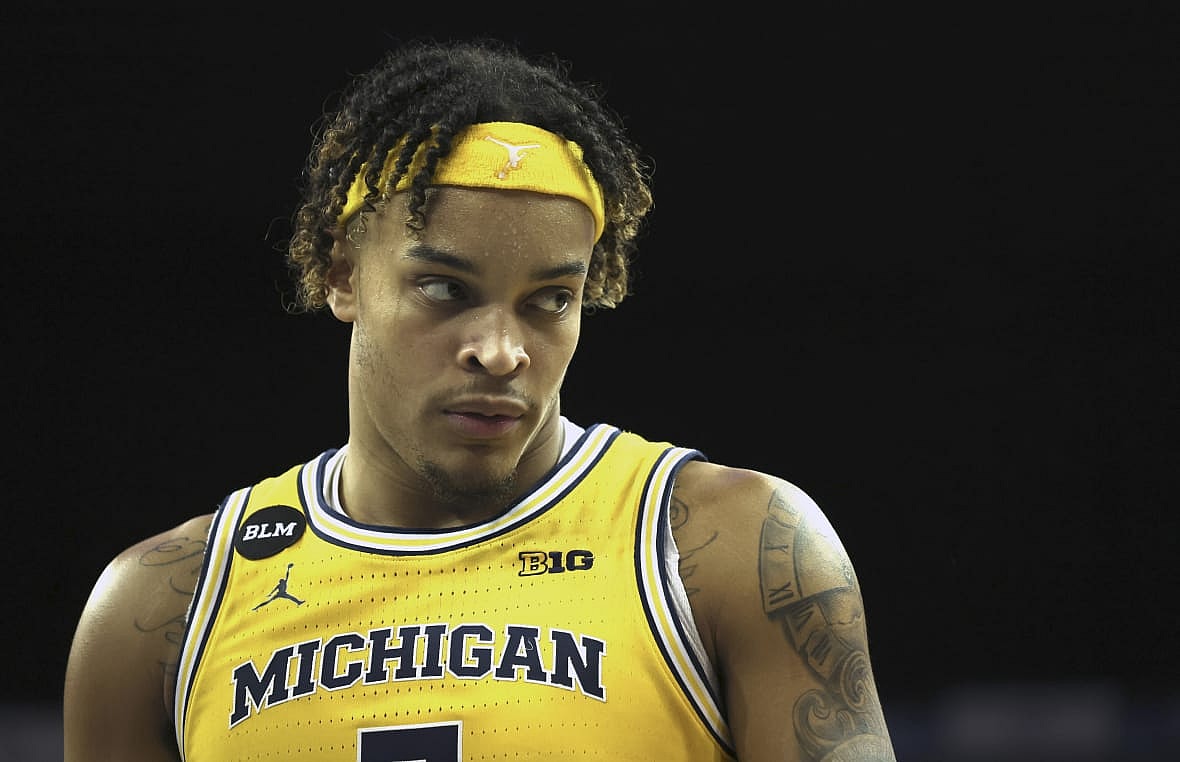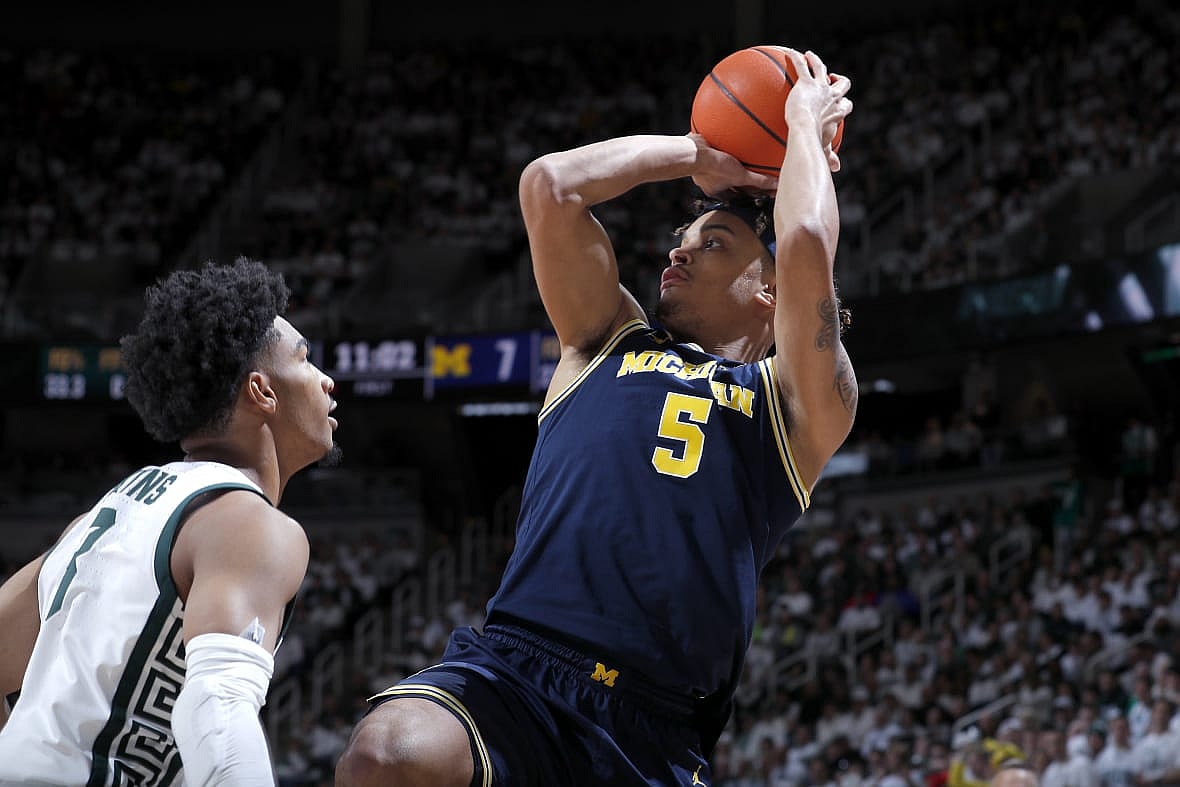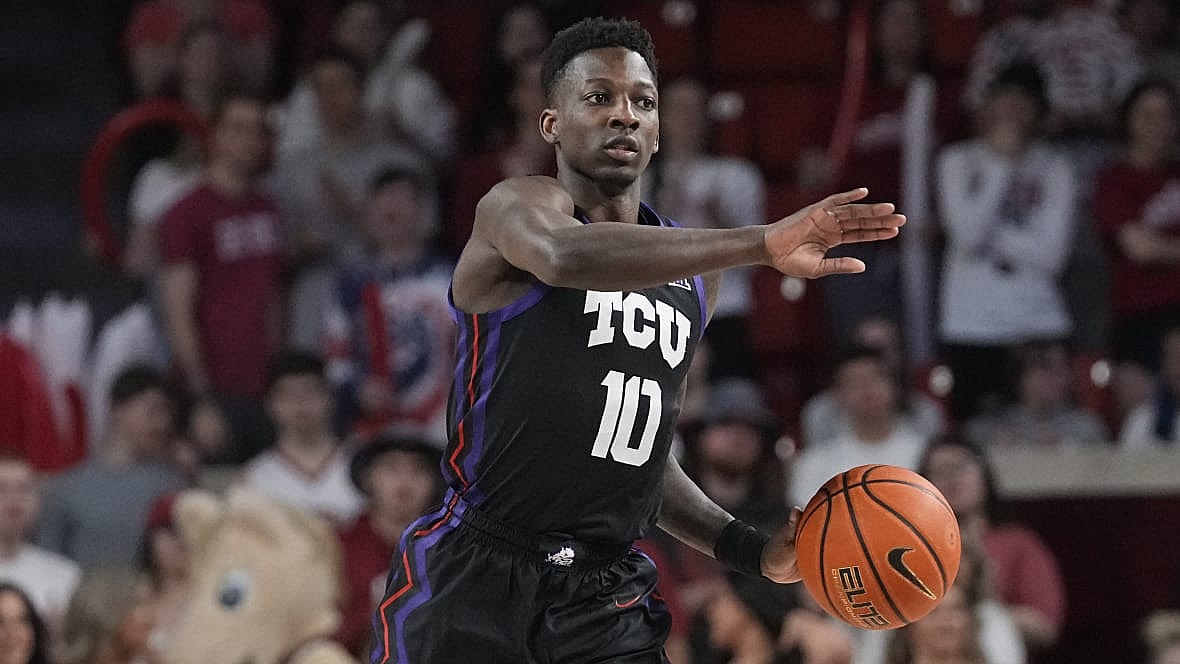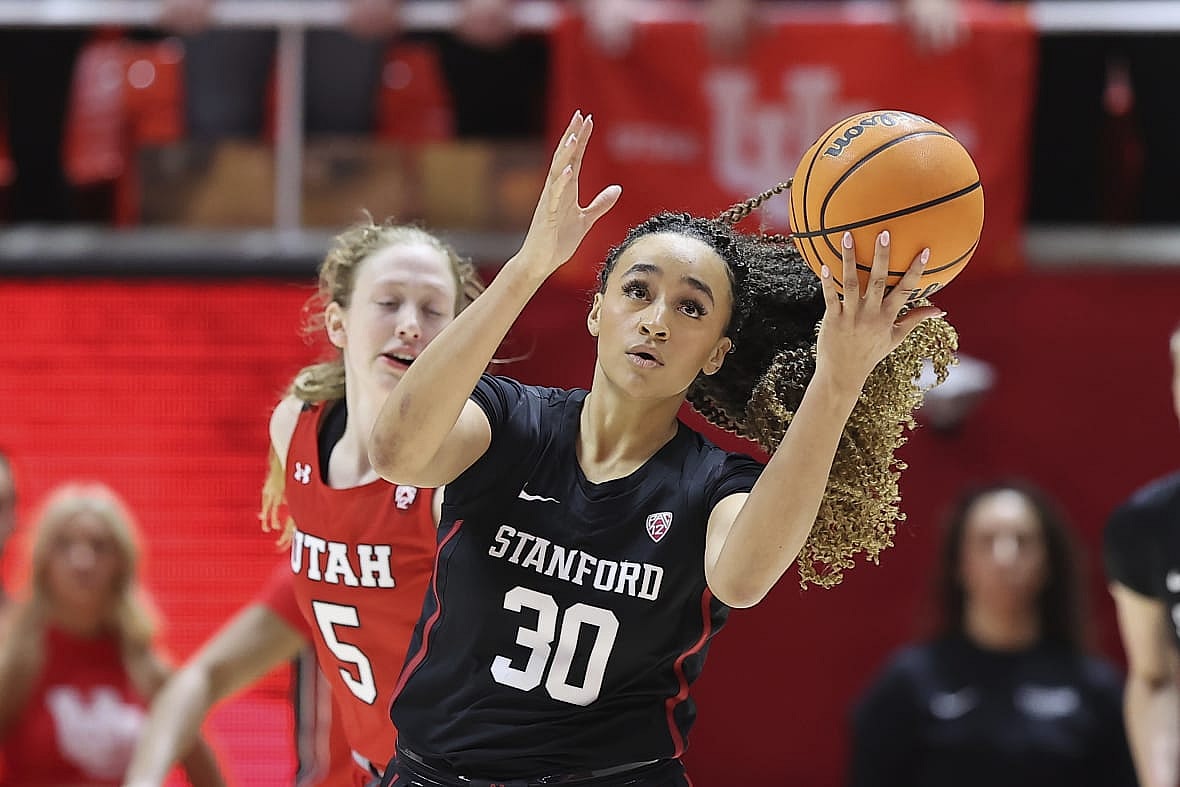HOUSTON (AP) — It wasn’t so much that social media was criticizing his son. That happens sometimes — especially after a loss like THAT.
But when a post came up suggesting Terrance Williams II, a junior forward for Michigan, be left for dead in a ditch, his dad decided enough was enough. Terrance Williams Sr.’s profanity-laced response to all the haters was, in many ways, an expected byproduct of social media vitriol that bubbled up after the Wolverines blew an eight-point lead in a one-point loss to Vanderbilt earlier this month — not in the NCAA Tournament but in the NIT.

“You actually root for them when they’re good,” Williams Sr. said of the Michigan fans in an interview with The Associated Press two days after the season-ending loss. “But then they make a mistake, and a game doesn’t go your way and you turn to hate. That’s unacceptable.”
The episode was just one of countless examples of the toxic minefield that athletes, coaches, friends and family face all too often on social media, all of it amplified for college basketball players when the calendar flips to March and the madness begins.
College administrators and coaches alike have warned for several years that students and athletes are facing increasing mental-health challenges exacerbated by the pandemic. And never have there been more outside voices that not only scrutinize every move players make on the court, but impact their emotional well-being away from it.
“The feedback right now, it can be so harsh and it’s so immediate, and I think that’s the hardest part,” said Melissa Streno, a Denver-based mental health consultant for high-level athletes. “It’s the immediacy of the feedback from people they don’t even know. And it can be so impactful on their identity and how they see themselves as a player on the court.”
Turning off social media is one option, but it’s not really practical, not with the way society interacts in the 21st century. And many athletes use social media to open the door to cash. It comes with a toll.
A survey conducted by the NCAA in the fall of 2021 found spikes among athletes who experienced mental exhaustion, anxiety and depression compared with a similar survey two years earlier — before the pandemic, and also before name-image-likeness deals became an everyday reality of college sports. The survey also found that despite a growing recognition of mental health as something to be addressed, fewer than half the respondents felt comfortable seeking support from a counselor on campus.
Even so, those counselors have been busy; a growing number of questions they field from the players involve how to manage social media.
“For some of them, social media brings pressure to put out information, to create content, build their brand and that can cause anxiety,” said Charron Sumler, a former college basketball player who is now an athletic counselor at Ohio State. “On the flip side, there’s the input where they’re receiving messages. And with phones in the locker room, sometimes they’re receiving that negative feedback and content before they’ve even had a chance to debrief with their coaches or with themselves.”

Just this month, Virginia’s Kihei Clark started trending for the wrong reasons when his ill-advised pass at the end of a first-round March Madness game against Furman allowed the Paladins to make the game-winning 3-pointer that sent the Cavaliers home.
After the game, Clark sat in the locker room and patiently answered every question. Predictably, social media was destroying him before the final buzzer even sounded.
Among those who knew the feeling was Matthew Fisher-Davis. He was the Vanderbilt guard who, thinking the Commodores were trailing, fouled a Northwestern player in the waning seconds of a first-round game in 2017. In fact, Vanderbilt was ahead by one; Northwestern made both free throws after the foul and won by a point.
Before the next season, Fisher-Davis released a slickly produced video showing him working out, the main theme of which was: “Everybody’s got something to say.”
“It gets to the point where, the stuff coming from outside the locker room doesn’t make anything easier,” Fisher-Davis told the AP in an interview this month.
Stanford’s Haley Jones was named most outstanding player at the women’s Final Four after helping the Cardinal win the national title in 2021. Two weeks ago, when Stanford made an early exitfrom this year’s March Madness, Jones’ performance — and her prospects for the upcoming WNBA draft — were being dissected, sometimes cruelly, on social media.
“Right after every game. I know what I did well, and I know what I didn’t do well,” said Jones, who is part of a program called Game 4 Good that focuses on mental wellness for athletes. “I don’t need to go and listen to thousands of people who don’t know me tell me these same things, and probably say it in a lot meaner way.”
On rare occasions, players get ripped for doing something good.

In an episode that illustrates the parallel explosive growth of both social media and online sports wagering, TCU’s Damion Baugh was the object of scorn in the second round this month when he launched a shot at the buzzer from near the halfcourt logo in a game that had already been sealed by Gonzaga.
Baugh’s 3 went in. It trimmed TCU’s final deficit to three, which allowed the Horned Frogs to cover the 4.5-point spread. That shot did nothing to change the brackets, but it did flip millions of dollars across the country and Baugh was roundly ripped on Twitter.
Baugh barked back: “I don’t get how y’all mad because I played until the last buzzer.”
Former Ohio State guard E.J. Liddell also felt compelled to defend himself after he missed a late free throw that was key to an upset loss to Oral Roberts two years ago.
“Honestly, what did I do to deserve this? I’m human,” he said in a post in which he posted screenshots of some of the insults directed at him, including a death threat.
Even one of social media’s biggest stars, Oregon’s Sedona Prince, who became famous after her video outlining the disparity between men’s and women’s weight rooms at the 2021 NCAA Tournaments went viral, had to take a brief break last year from TikTok.
“I’m not any different because I’m on TikTok. I’m still a person,” Prince said in a tearful video since taken down, while acknowledging her mental health had been declining.

Streno, the mental health consultant, said social media can exacerbate depression and anxiety.
During a three-month stretch last spring, at least five college athletes died by suicide. Among the reasons given by friends and family were the constant pressure of performing at a high level, the pressure to maintain a certain weight or physique, the fear of being perceived as weak because of injuries and the limited social opportunities because of the demands of a sports schedule.
Given the amount of daily interaction athletes have with friends and family on social media apps, Streno said it’s more realistic to coach players on how to deal with feedback than simply advising them to shut down everything.
“If it were as simple as ‘don’t look at your phone,’ then this wouldn’t be an issue,” she said. “But there’s such a quick, immediate, ‘Oh, this must mean this about me. I’m not good enough, or I’m not living up to this level.’ And then your mind can kind of start going down into this spiral.”
Williams, the father of the Michigan forward, said his son does a good job of shutting out social media during the season. After the events of this month, the dad planned on going dark for a while, too.
“People said he didn’t play well, and I get that,” Williams said. “But when you say my son, who I’ve raised and who I love tremendously, that you wish him to be dead in a ditch, that’s when I’ve got to turn the switch.”
TheGrio is FREE on your TV via Apple TV, Amazon Fire, Roku, and Android TV. Please download theGrio mobile apps today!

